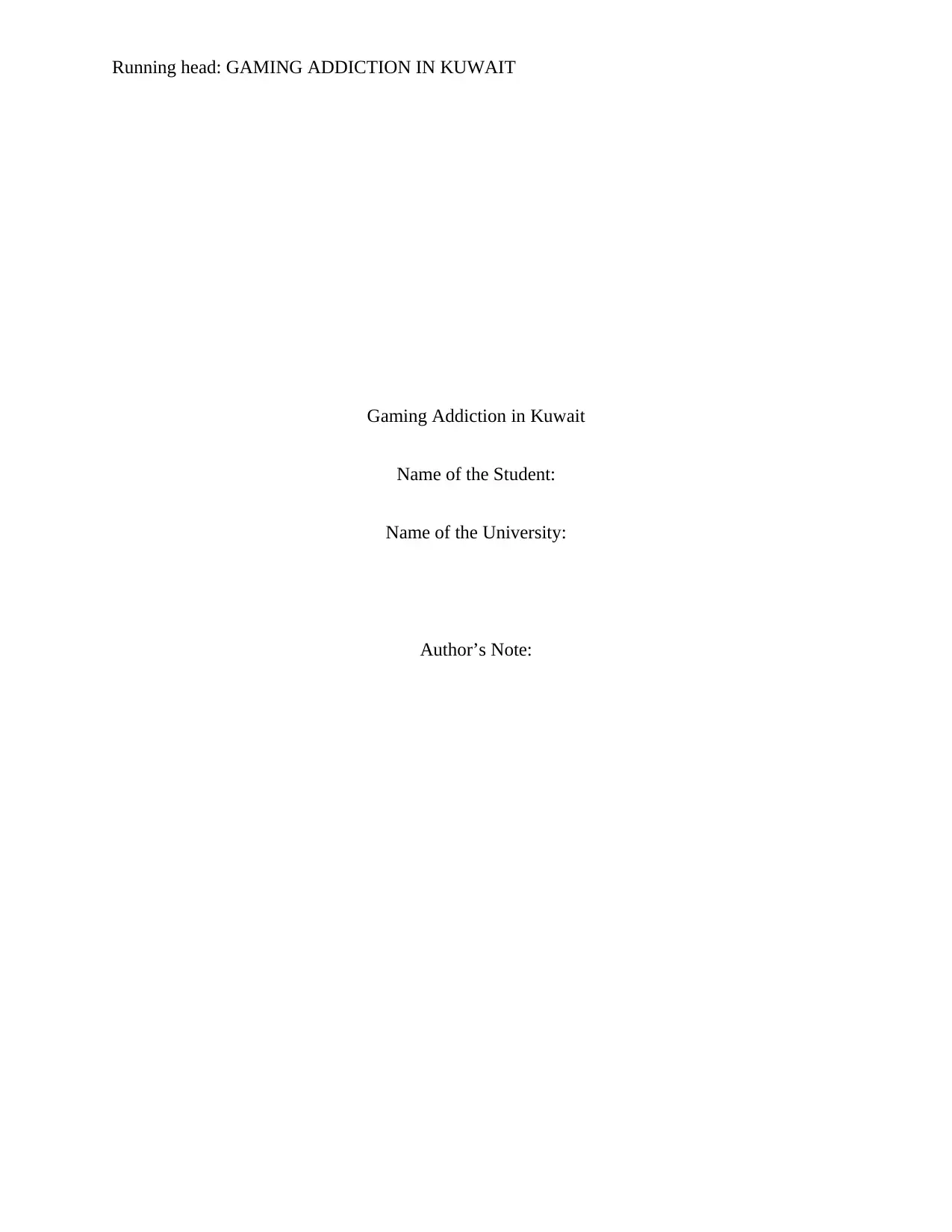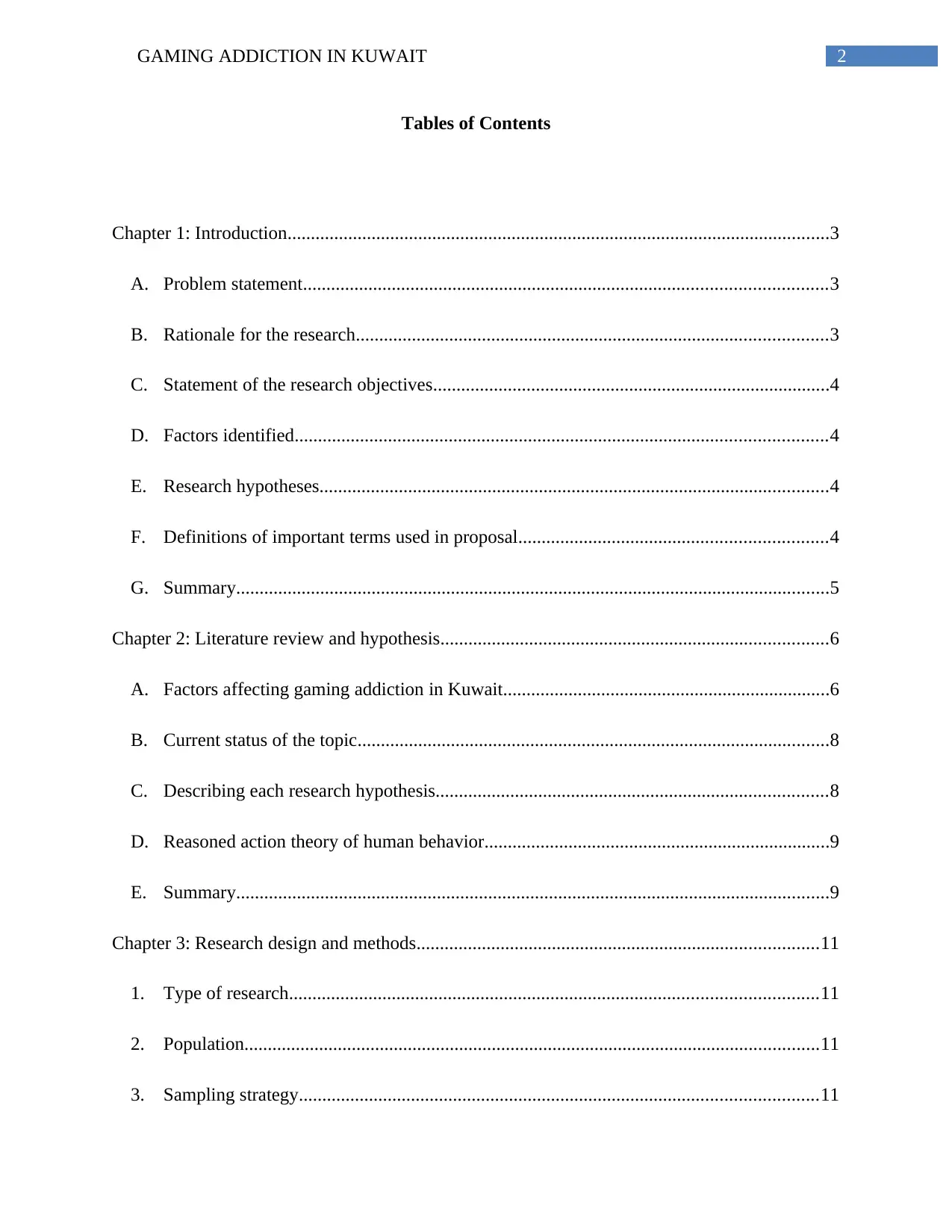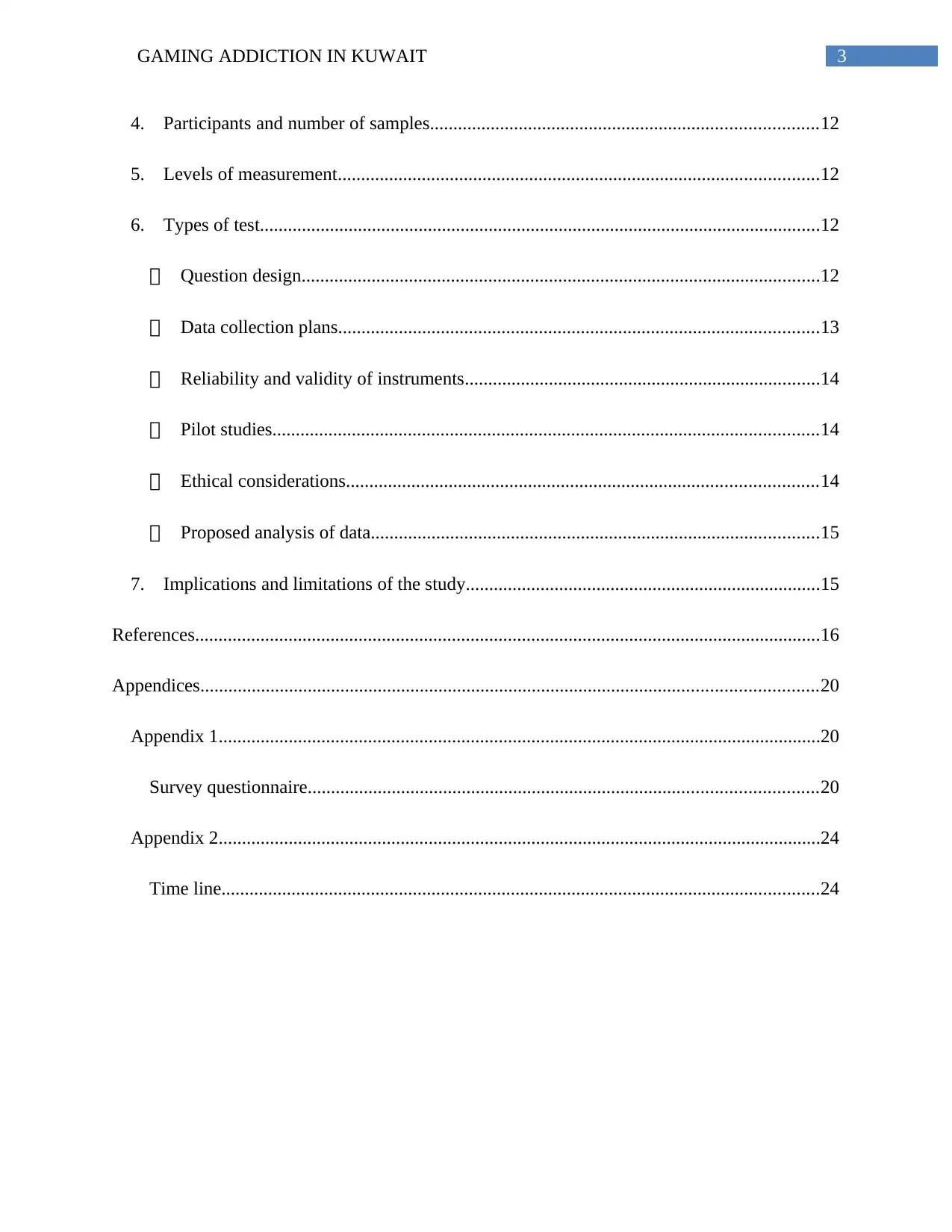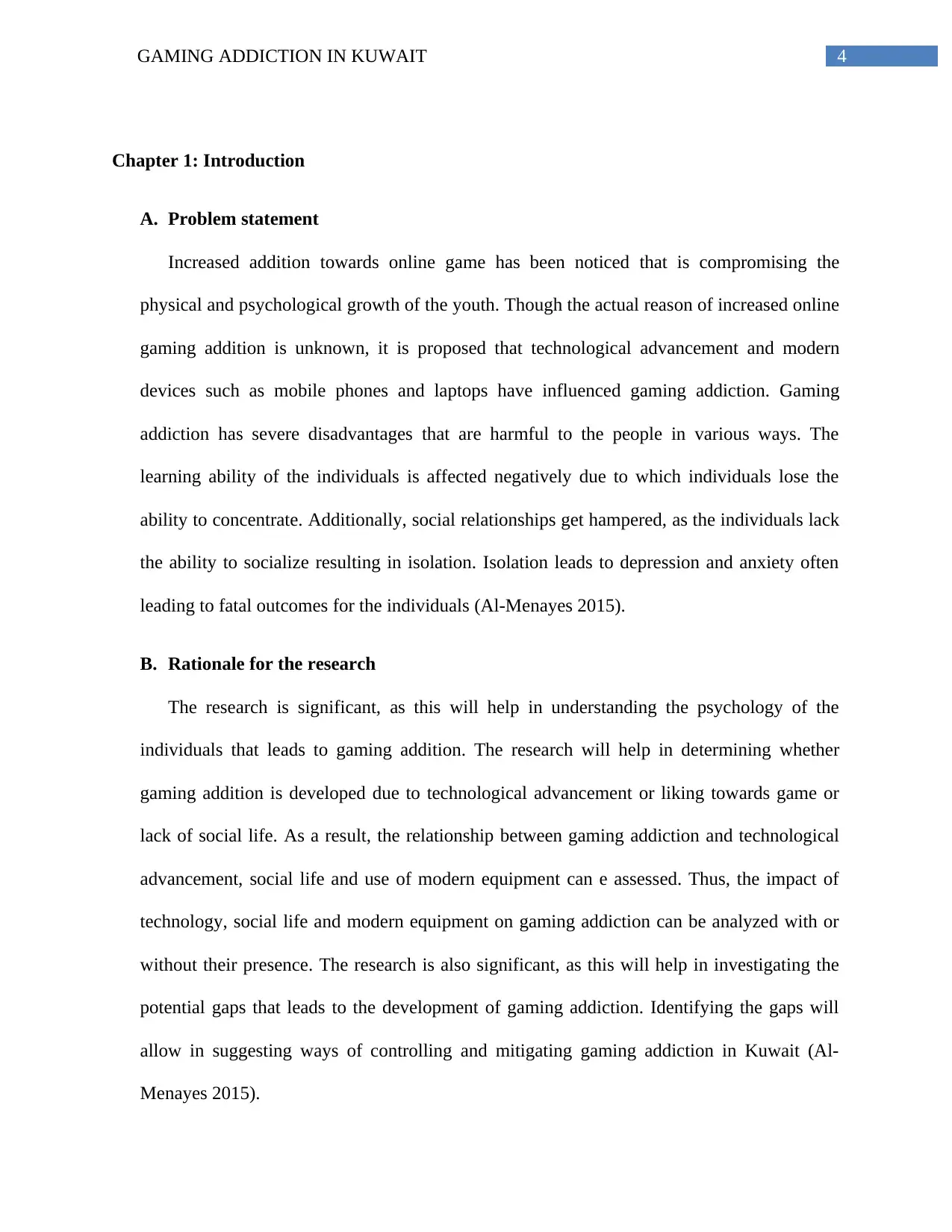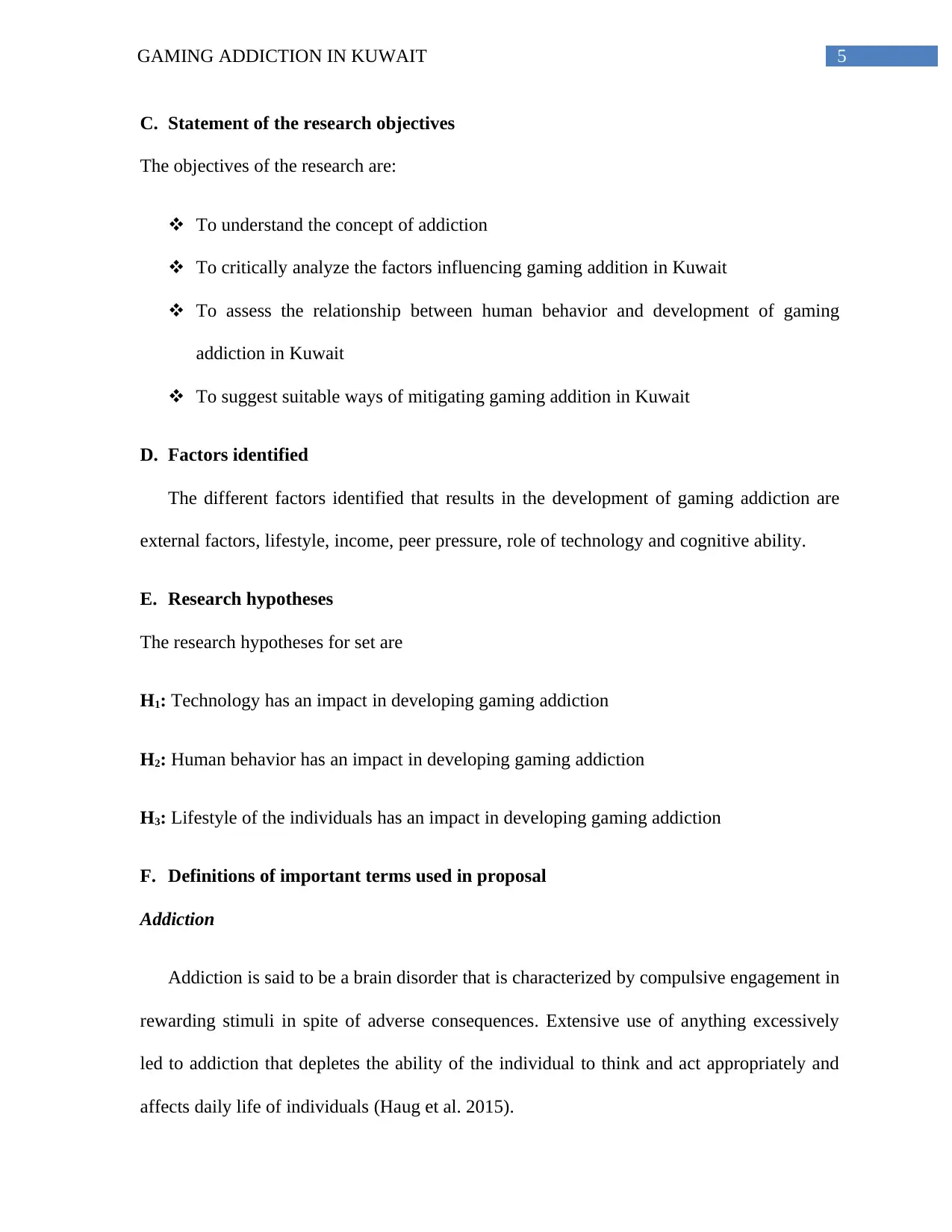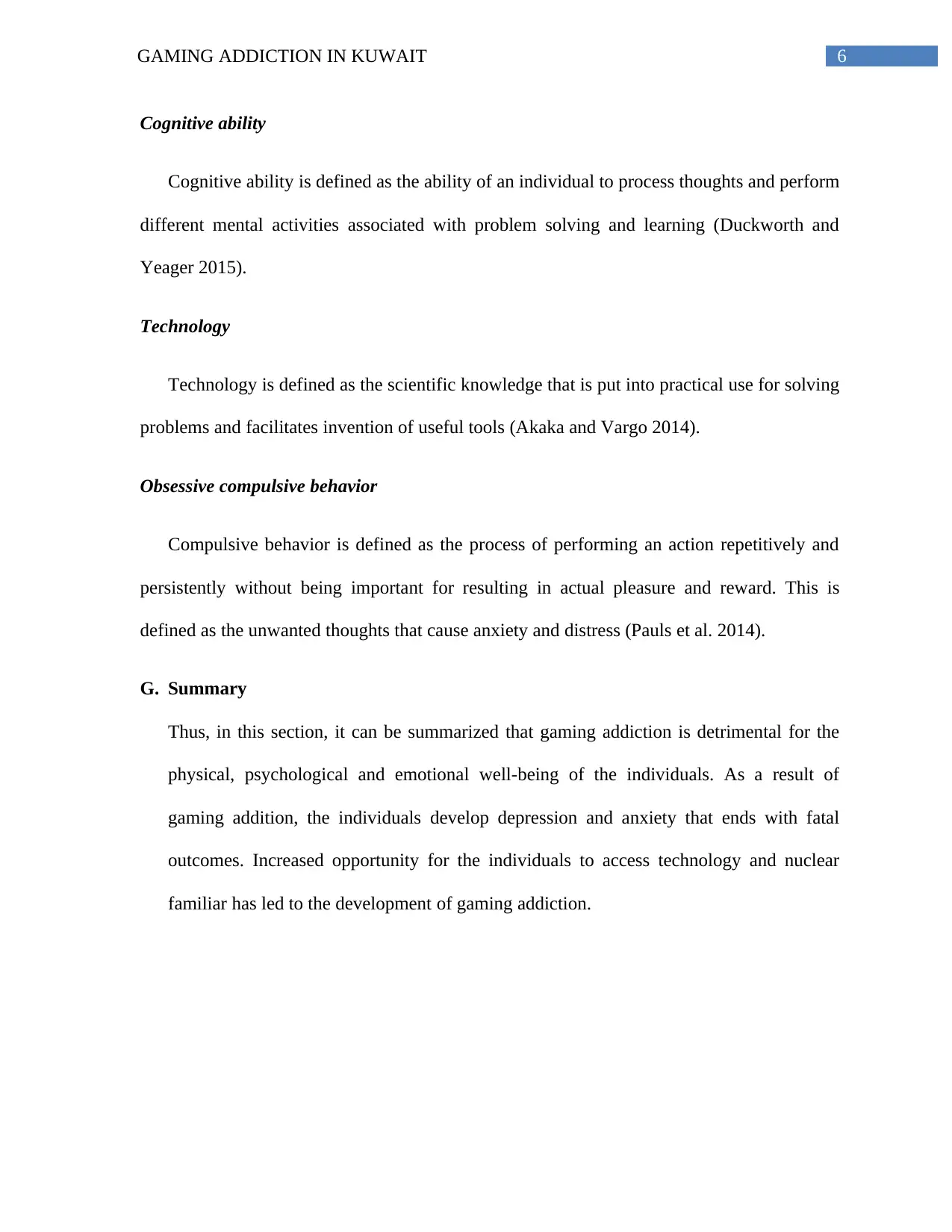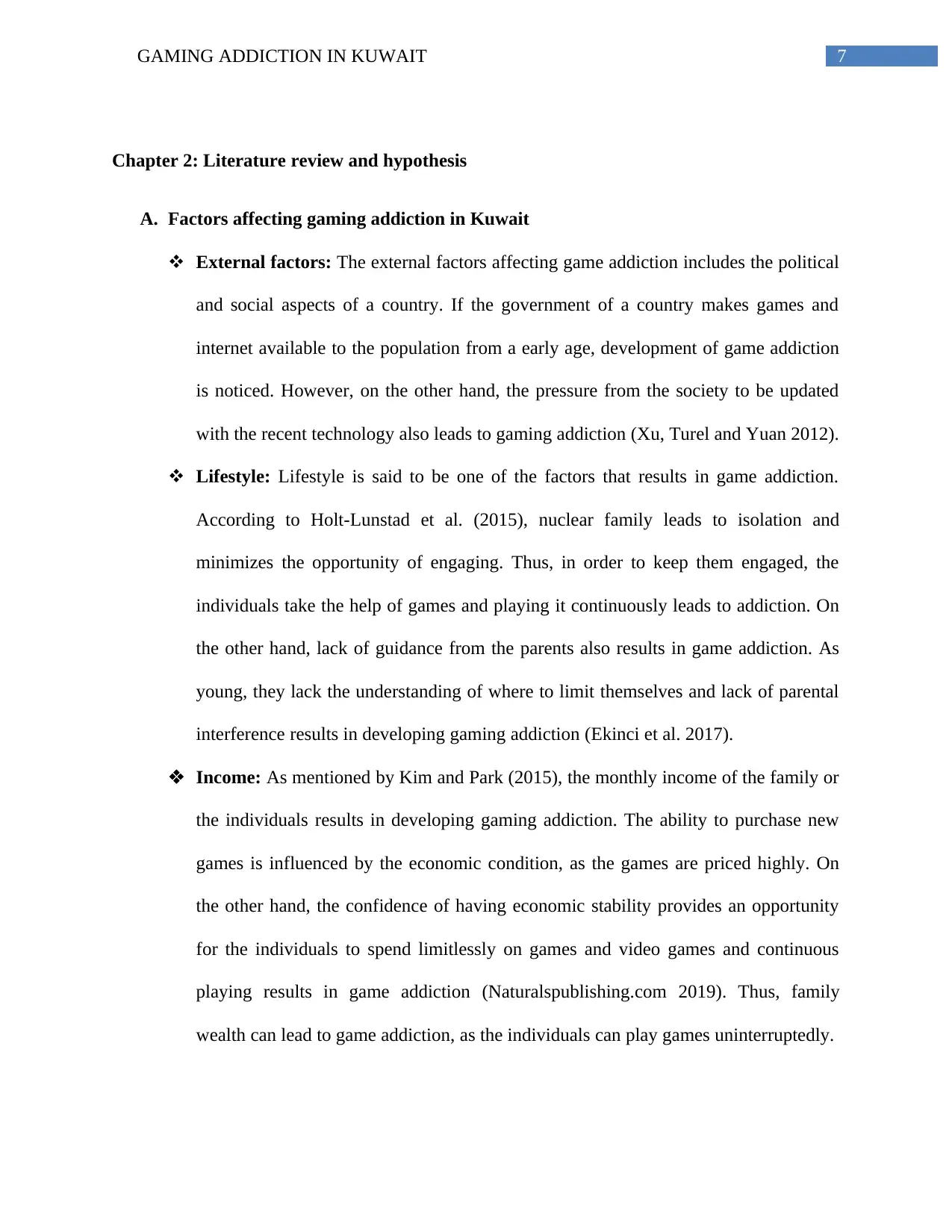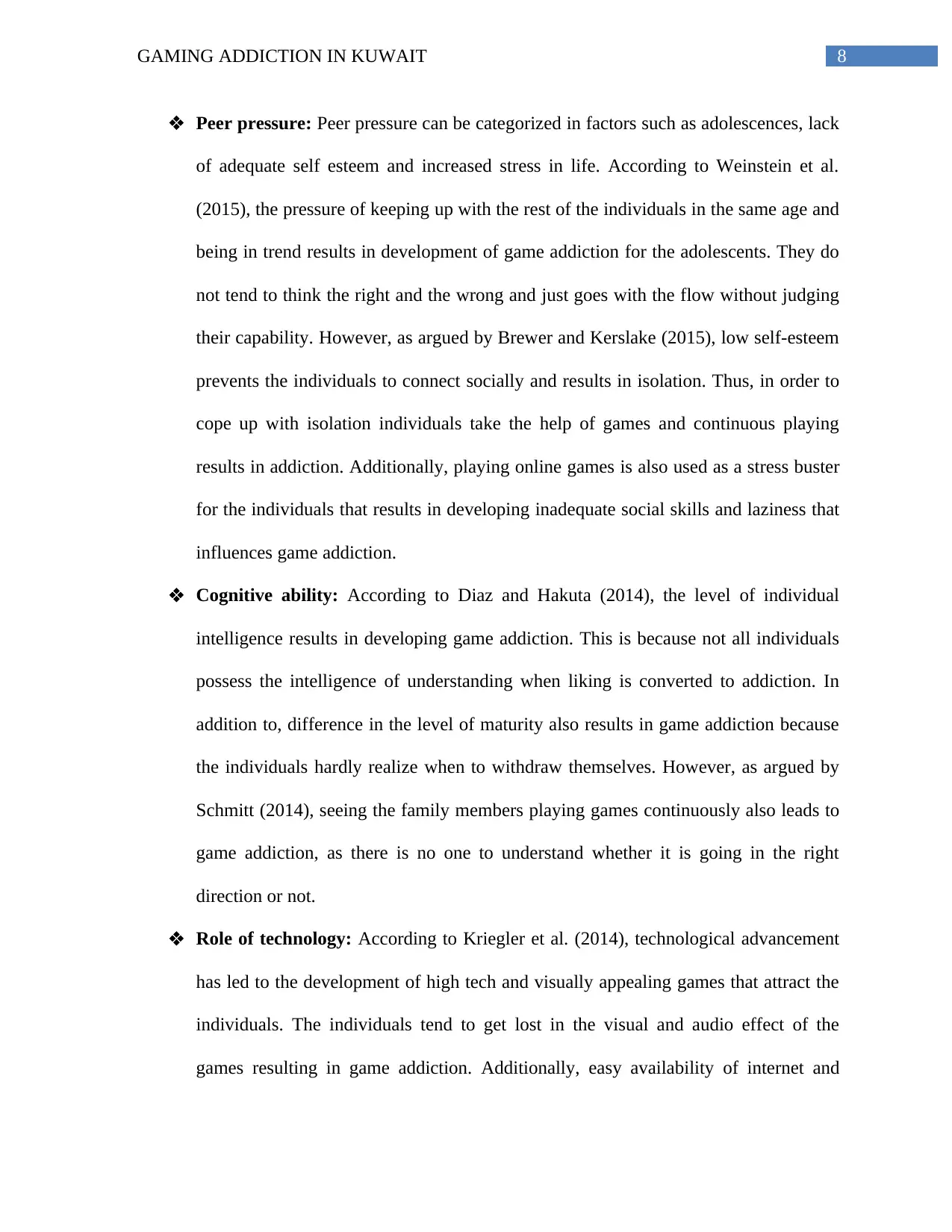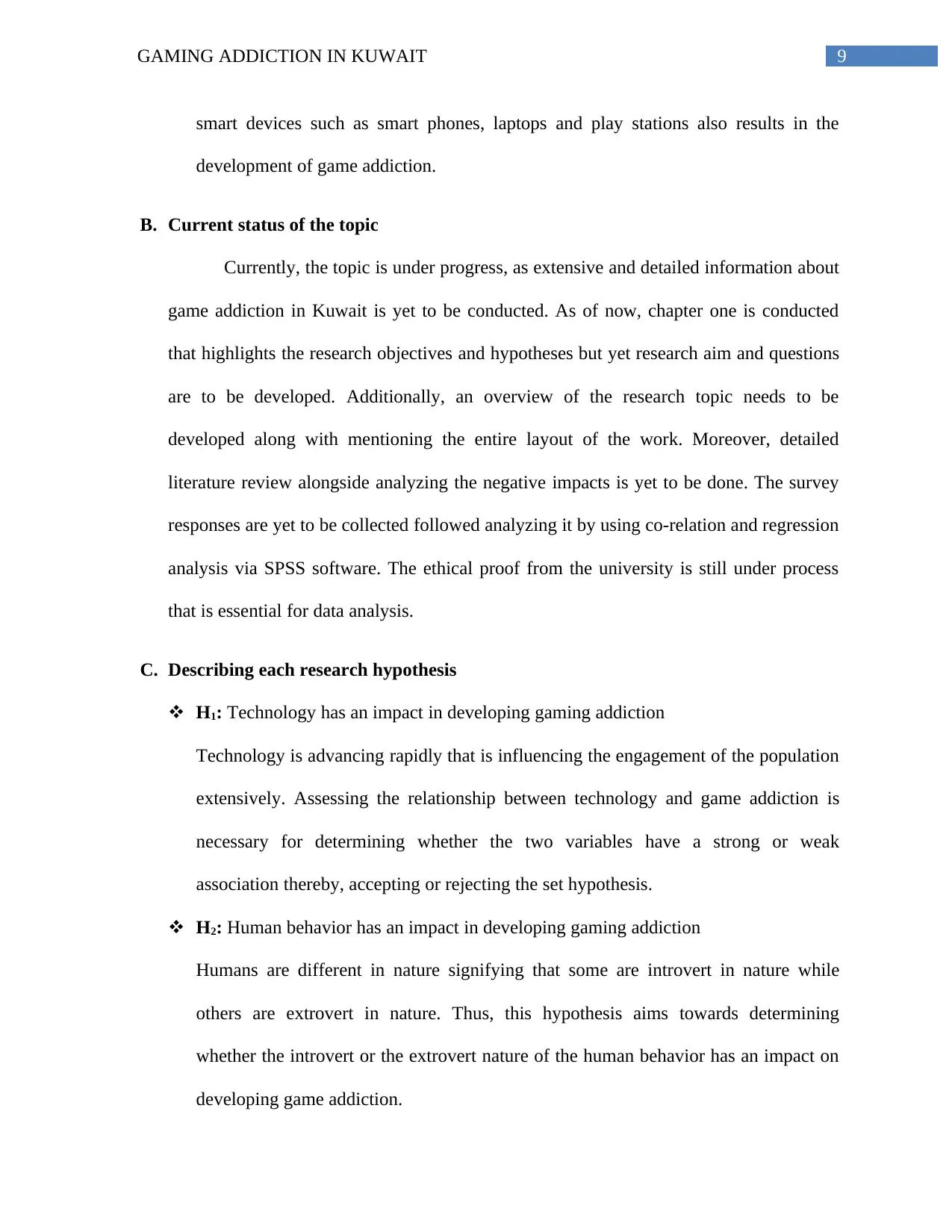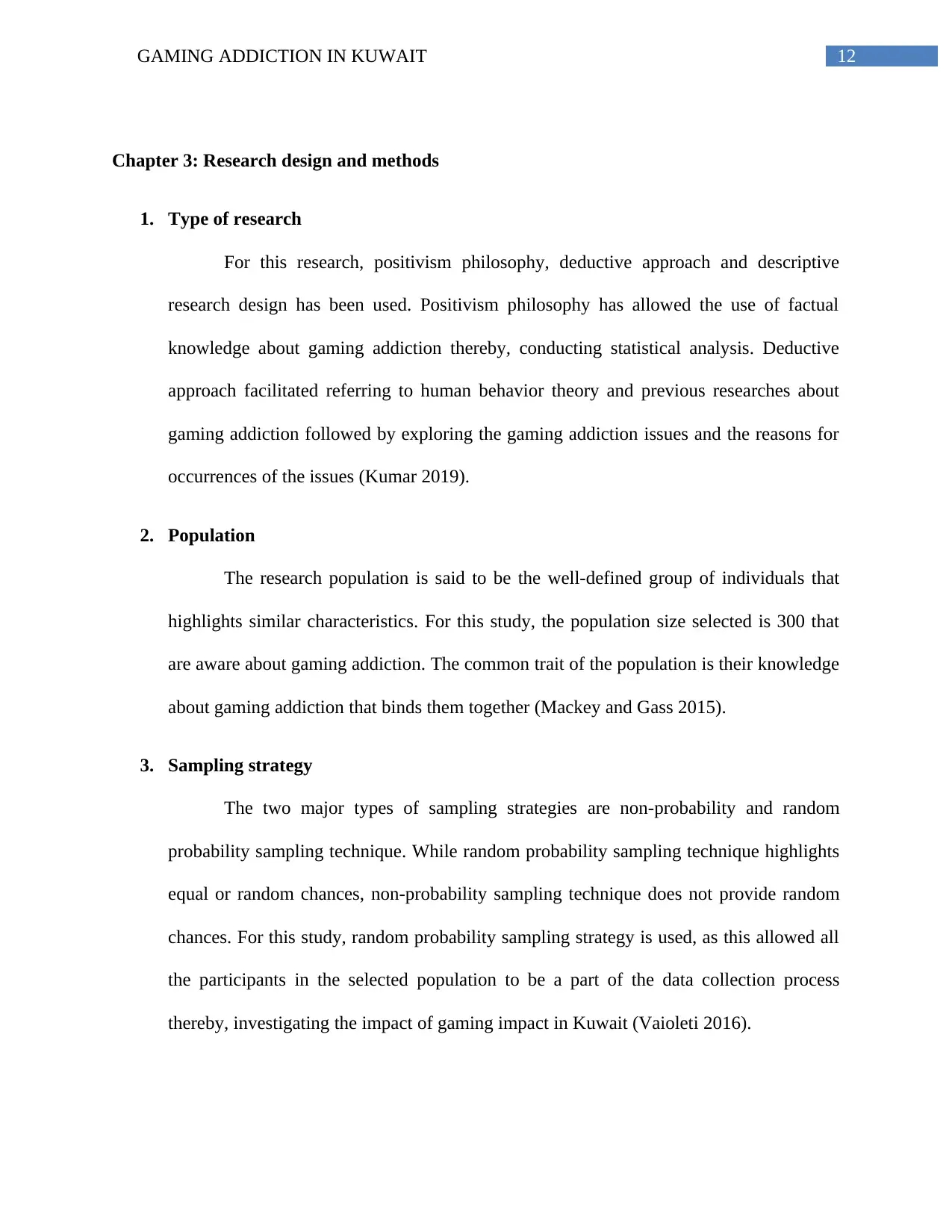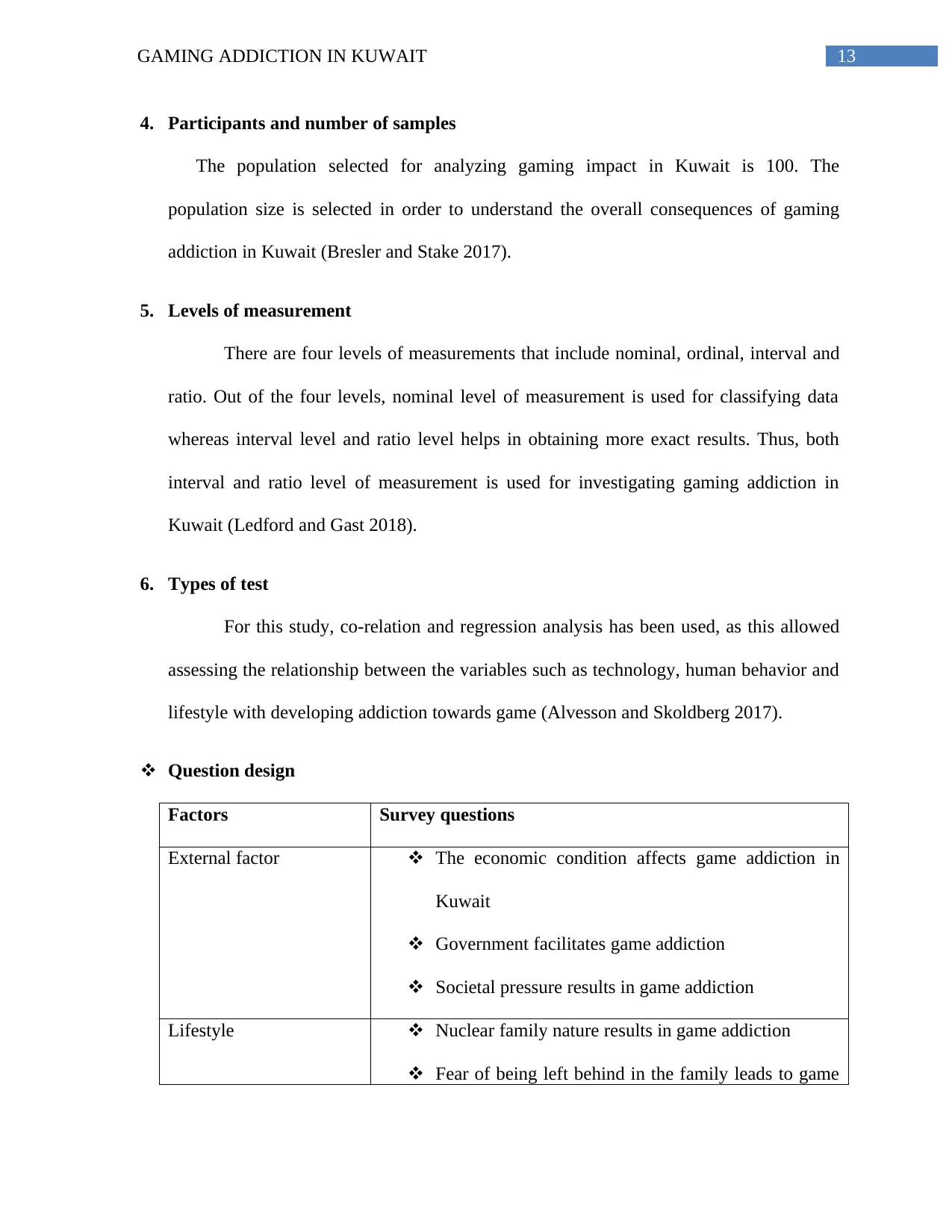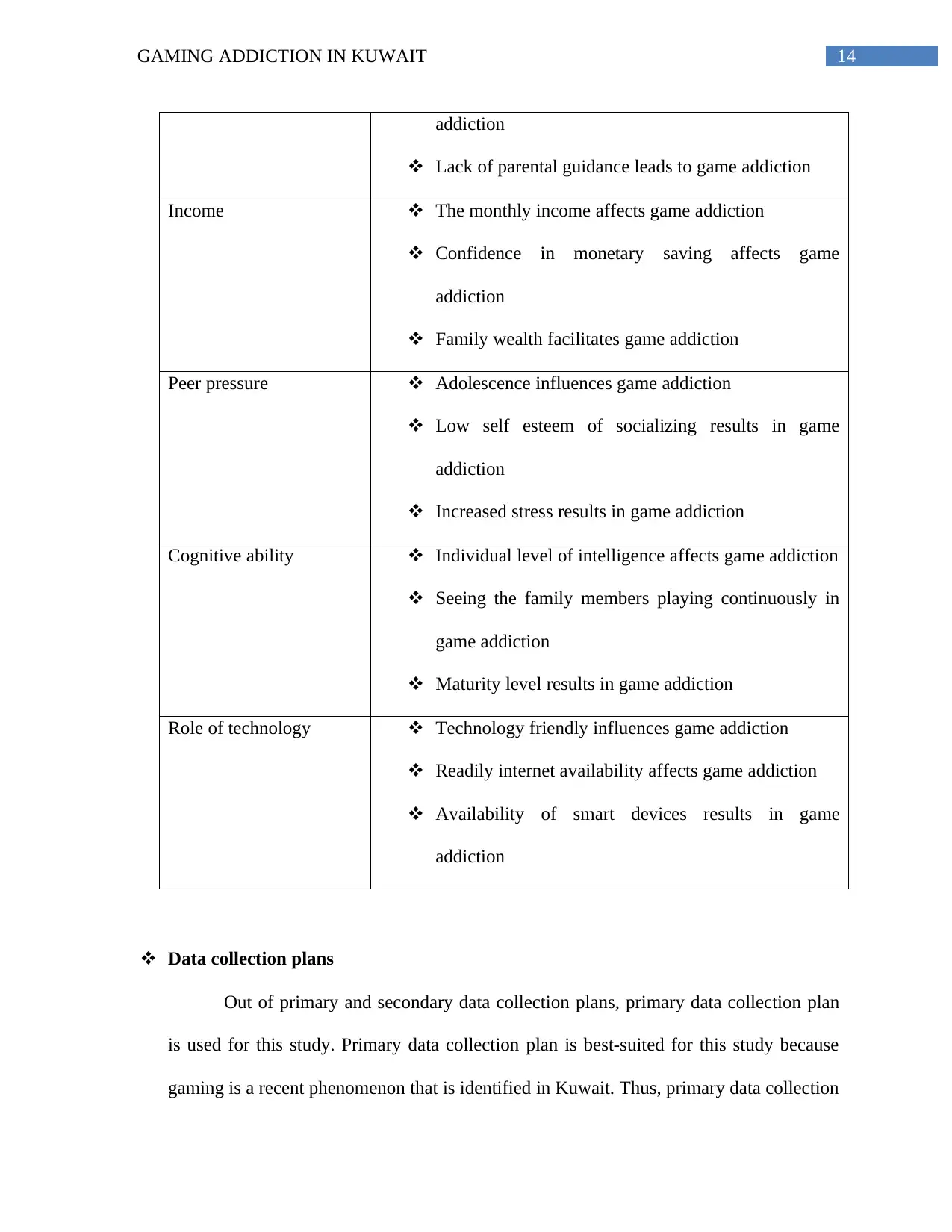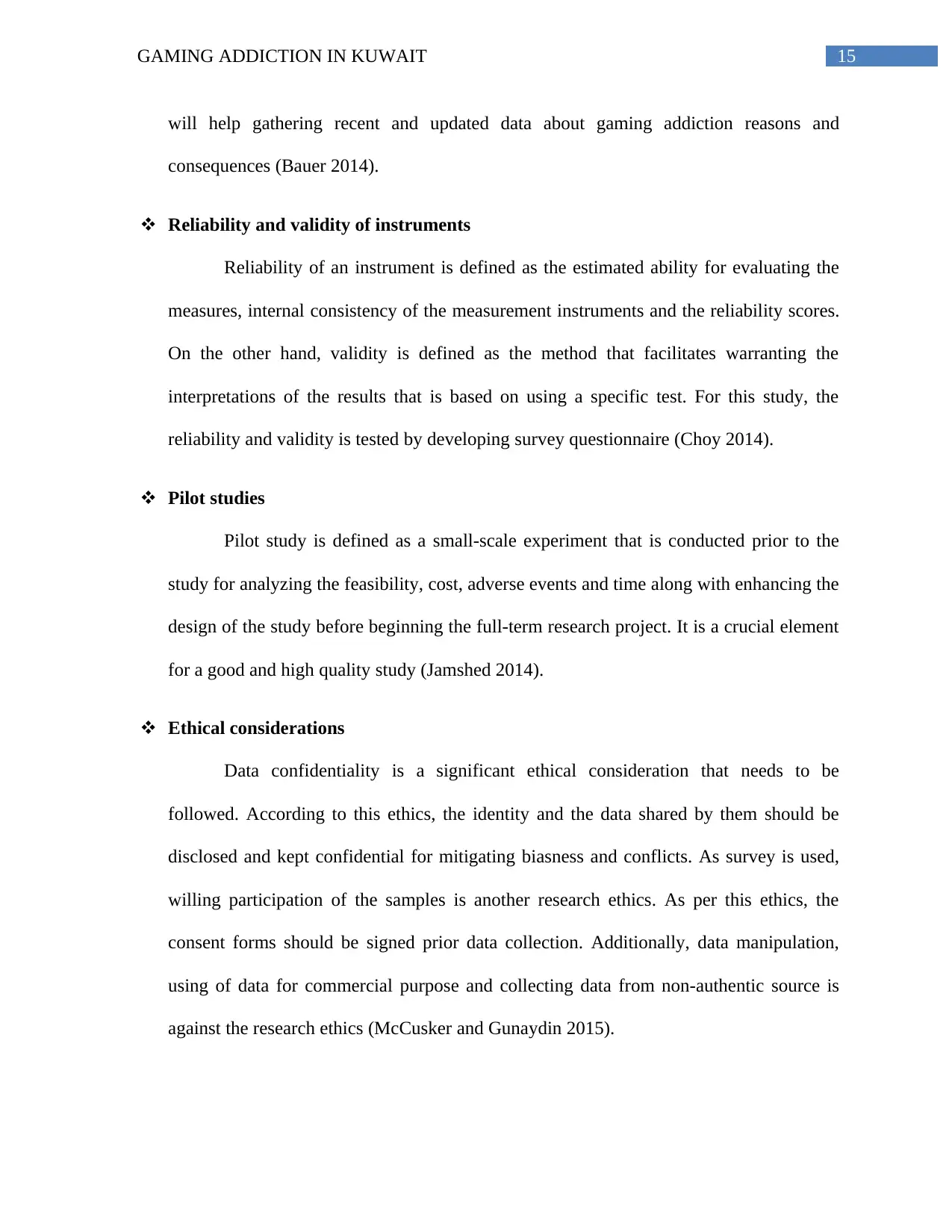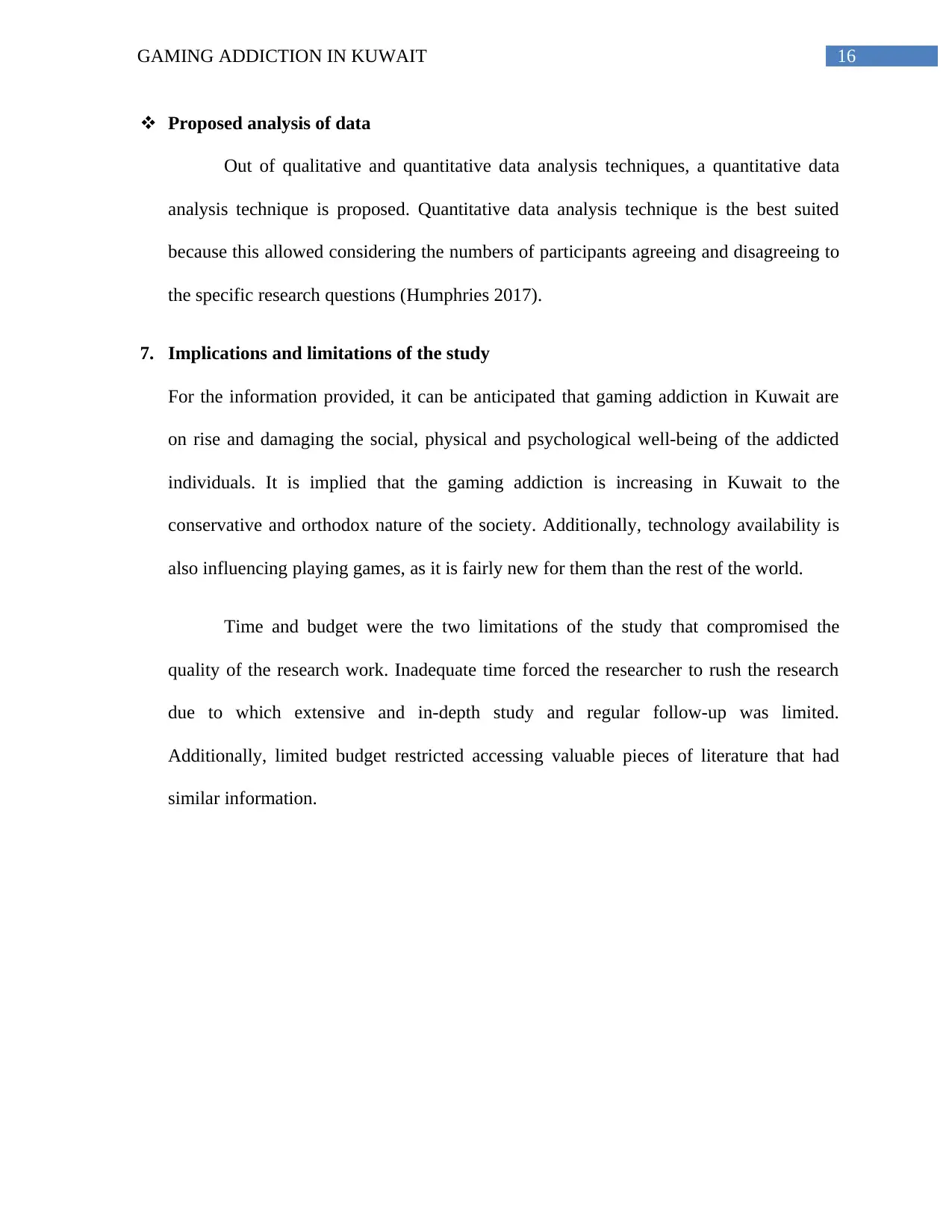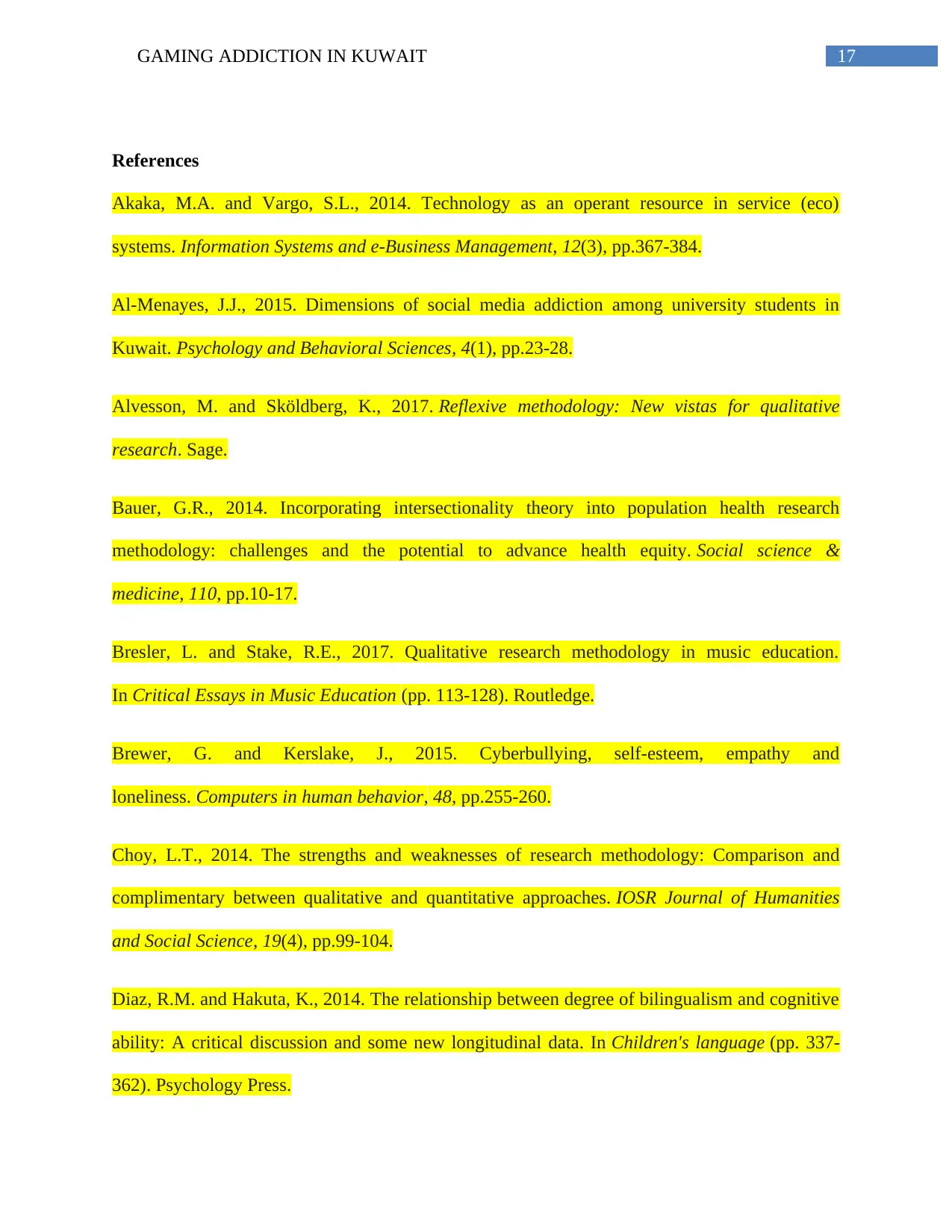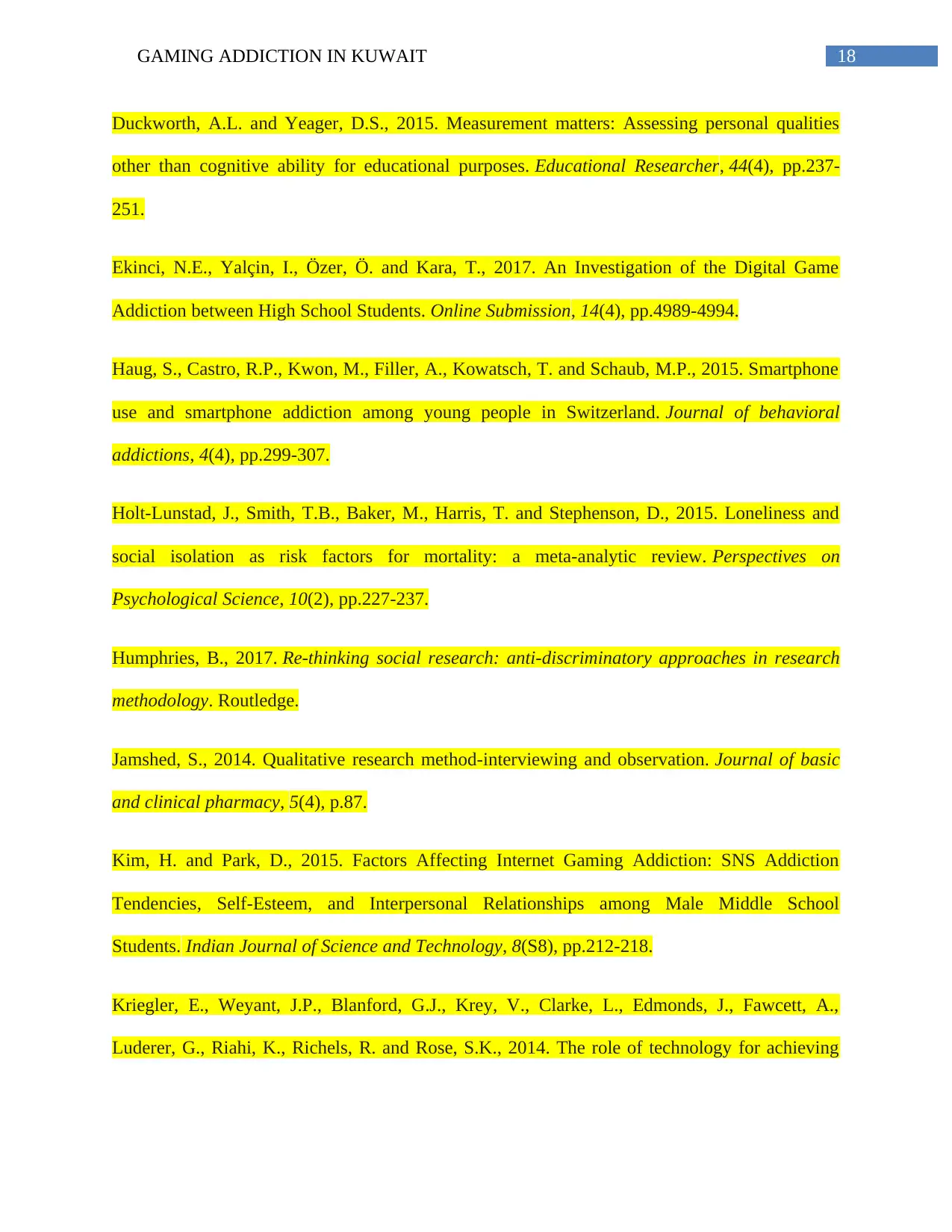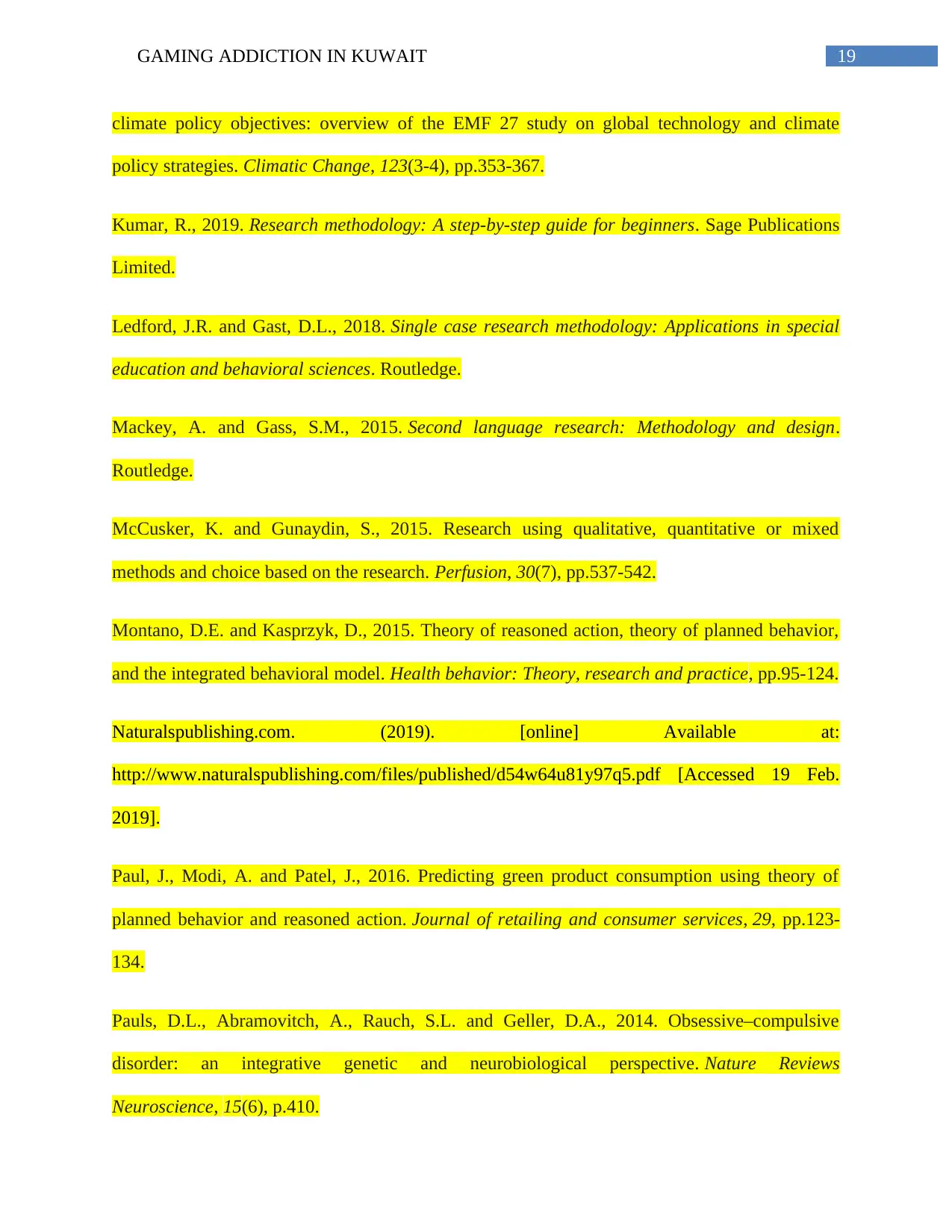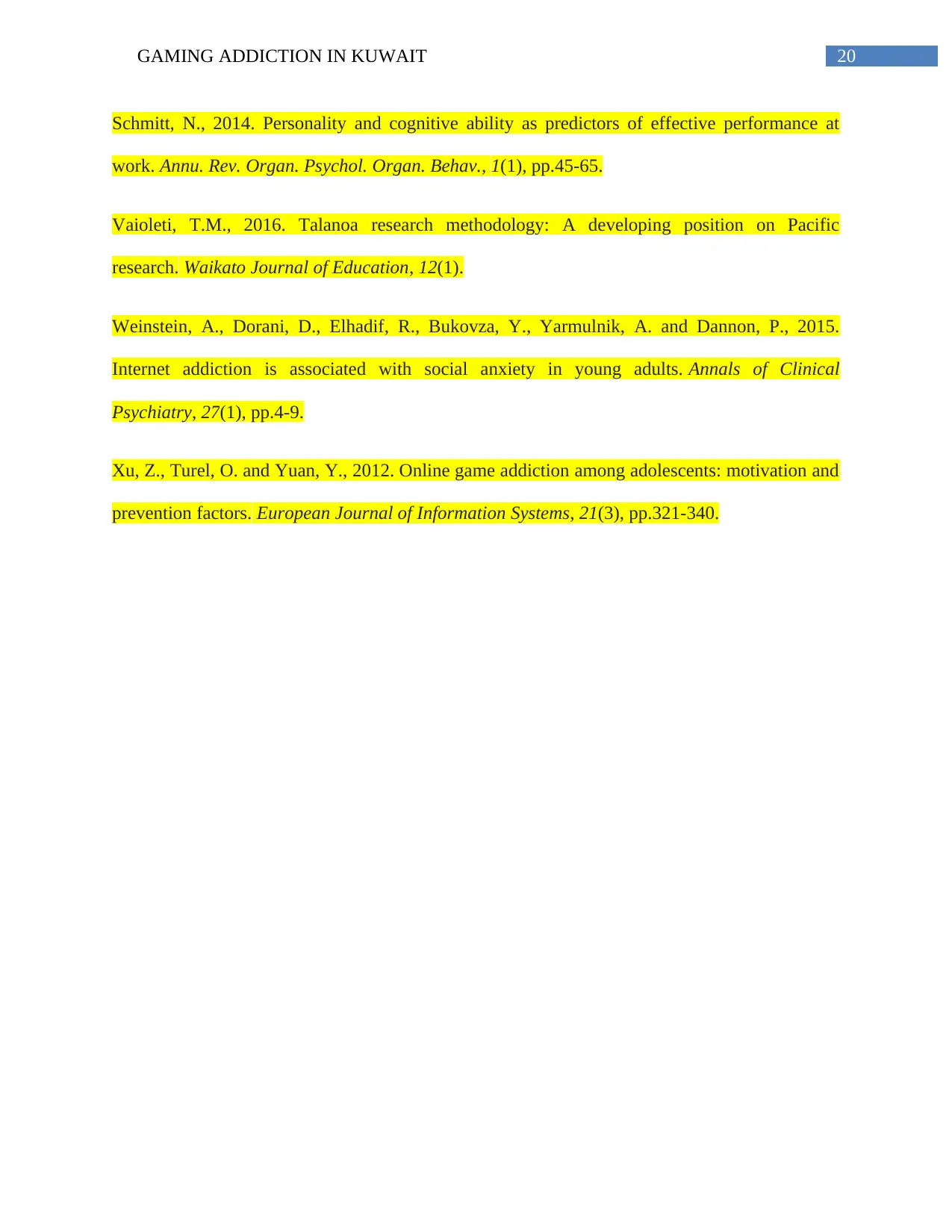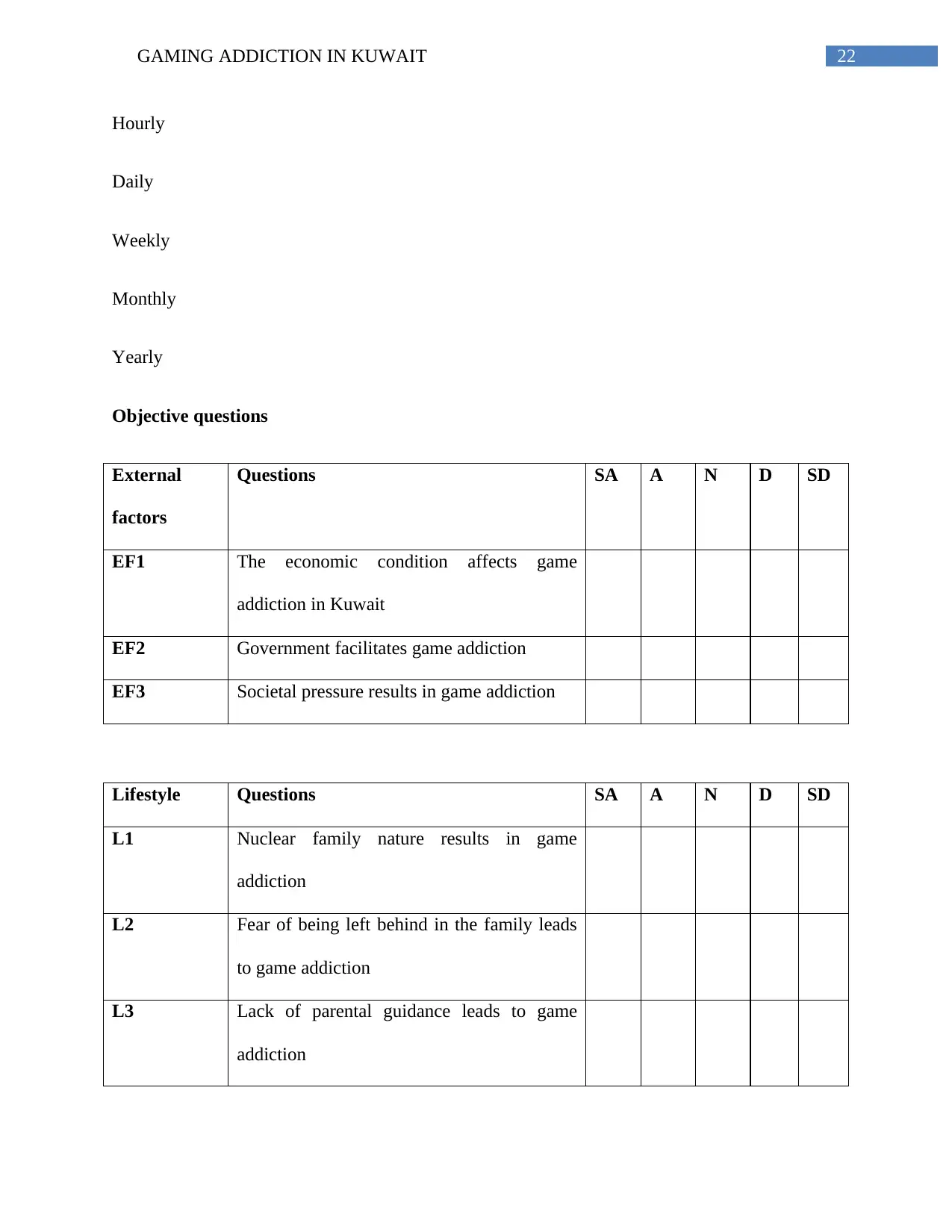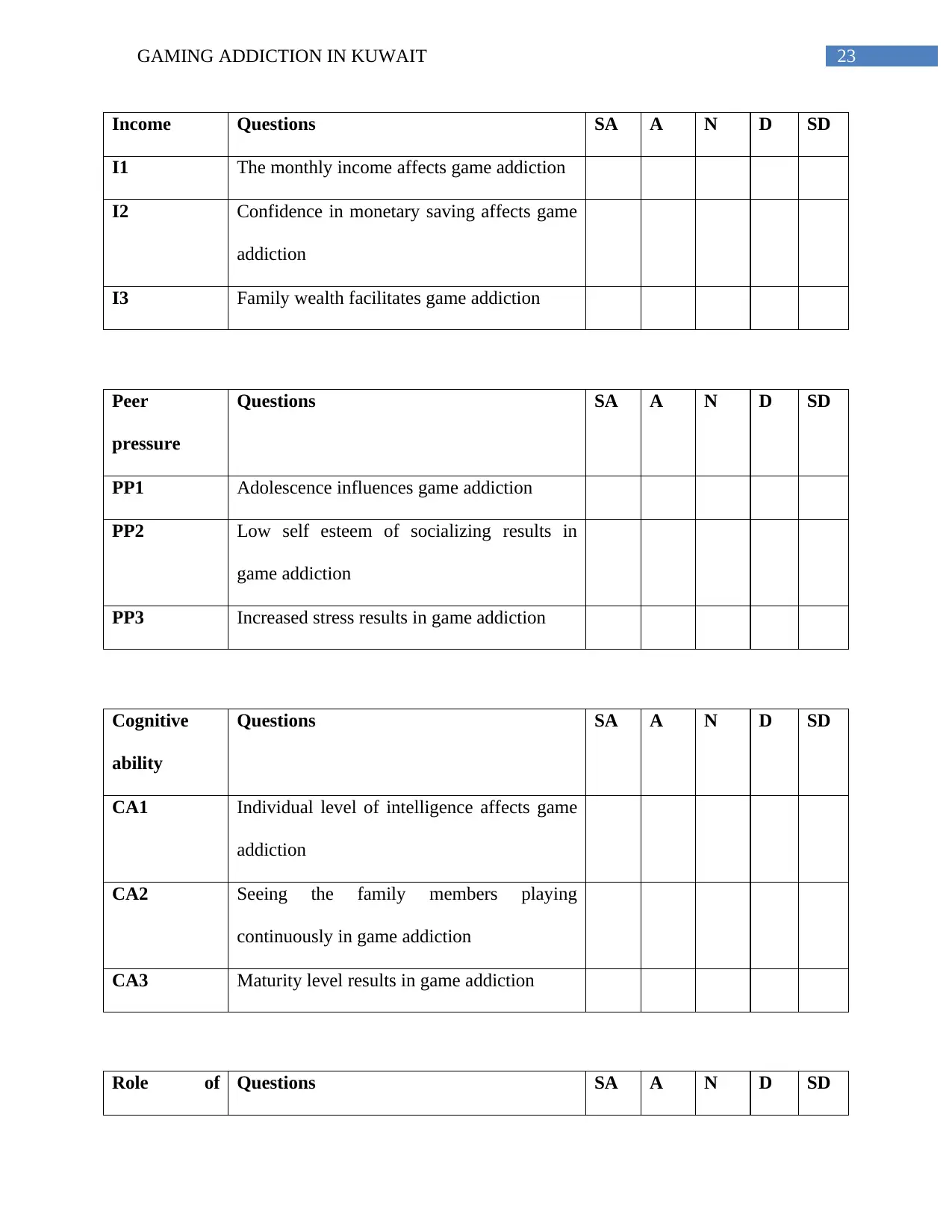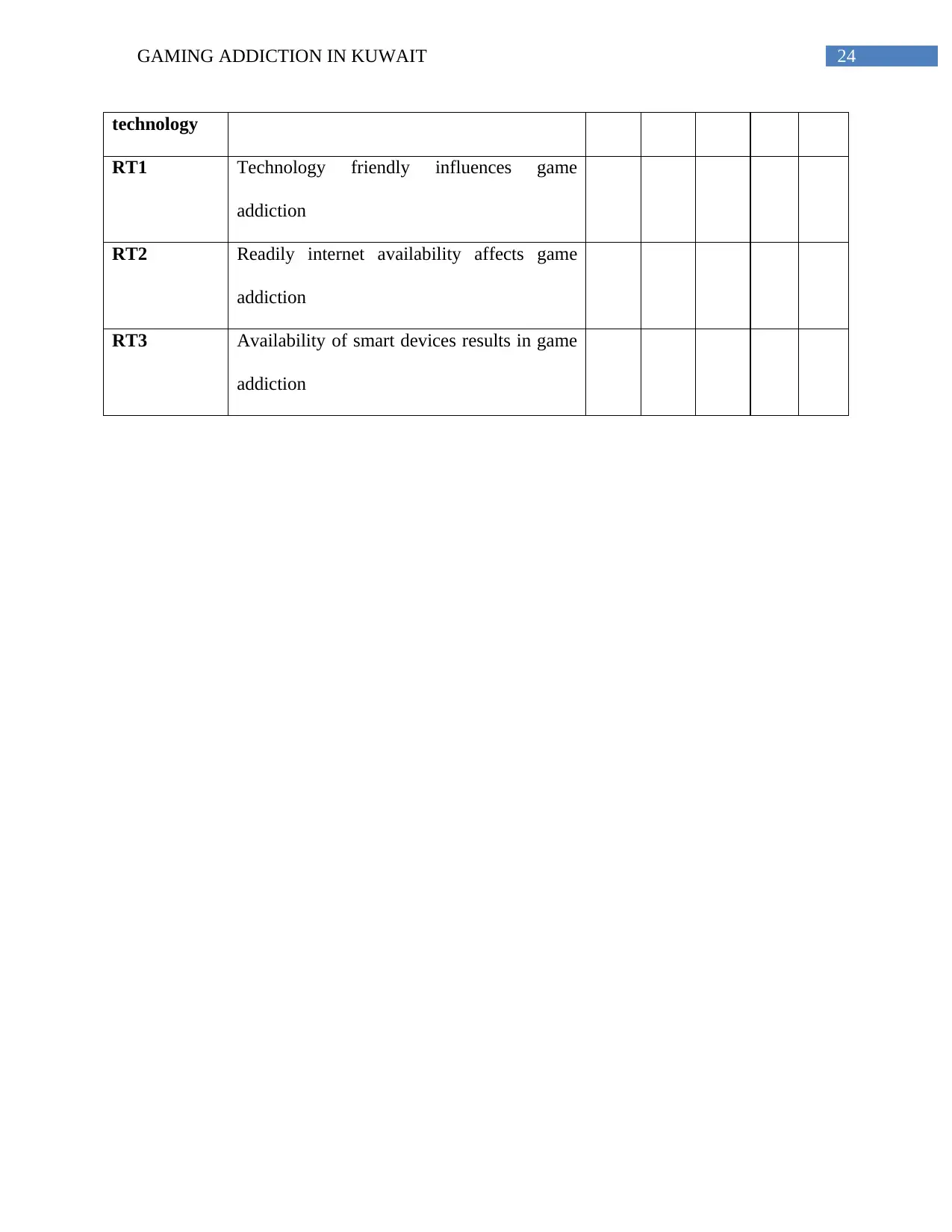This report discusses gaming addiction in Kuwait. The report includes an introduction, a literature review, and a description of the research design and methods used to study the topic. The introduction includes a problem statement, rationale for the research, research objectives, factors identified, research hypotheses, definitions of important terms, and a summary. The literature review discusses factors affecting gaming addiction in Kuwait, the current status of the topic, and the reasoned action theory of human behavior. The research design and methods section describes the type of research, population, sampling strategy, participants and number of samples, levels of measurement, types of tests, question design, data collection plans, reliability and validity of instruments, pilot studies, ethical considerations, proposed analysis of data, implications and limitations of the study.
![[object Object]](/_next/static/media/star-bottom.7253800d.svg)
![[object Object]](/_next/static/media/star-bottom.7253800d.svg)
